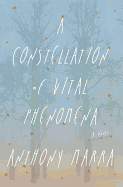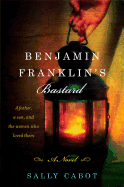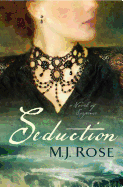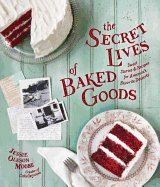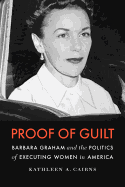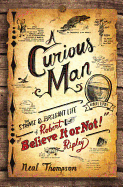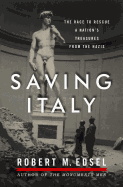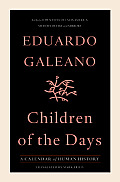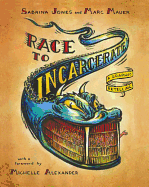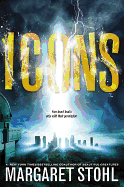 |
| photo: Pushett Irby Studios |
M.J. Rose is the author of 13 novels, including the first self-published e-book to go mainstream, Lip Service, which she published in 1999. Her last four novels, The Reincarnationist, The Memorist, The Hypnotist and The Book of Lost Fragrances, were all Indie Next picks. Rose is also the co-author of three nonfiction books, including the recently published What to Do Before Your Book Launch, with Randy Susan Meyers. Her new novel is Seduction (Atria Books), a gothic tale that involves lost letters of Victor Hugo, current-day mythologist Jac L'Etoile and someone called the Shadow of the Sepulcher; see our review below.
A founding member and current board member of the International Thriller Writers and founder of the first marketing company for authors, AuthorBuzz.com, Rose has been profiled in Time, Forbes, the New York Times, Business 2.0, Working Woman, Newsweek and New York magazine, has appeared on The Today Show, Fox News and PBS NewsHour and has been featured in dozens of magazines and newspapers in the U.S. and abroad, including USA Today, Stern, L'Officiel and Poets and Writers.
Reincarnation is a central topic in many of your novels and your characters run the gamut from committed belief to deep skepticism. Where do you fall, and what do you find most interesting about this concept?
Today I pretty much believe, but last week I was questioning things again. My opinion tends to be colored by whatever character I'm writing at the time. When I'm Jac, the heroine of Seduction and The Book of Lost Fragrances, I doubt, but when I'm writing her mentor Malachi or her brother Robbie, I believe.
The first character we meet in Seduction is Victor Hugo. As an author, how does your process or technique change when writing from the point of view of a historical figure, like Hugo, as opposed to an original character like Jac?
Writing Hugo was like nothing else I've ever done. He is a fairly recent historical figure and all his writing is available, from his letters to poems. I read and read and read and then put it all away. I almost abandoned the book three times because I felt overwhelmed by his genius. Ultimately it was picking up a fountain pen and a bottle of ink and a journal from Paris and starting the book in longhand that allowed me to find a Hugo who didn't intimidate me. I wound up writing the entire book in longhand... all 120,000 words of it.
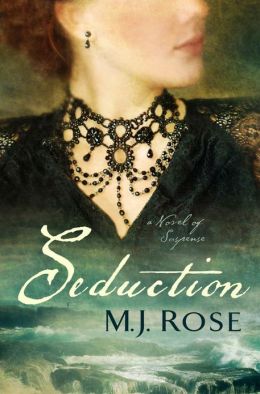 In discussing your previous novel The Book of Lost Fragrances, you described a lost Egyptian book of perfume formulas as a sort of kernel of historical fact that inspired the novel. Was there a similar spark behind this novel?
In discussing your previous novel The Book of Lost Fragrances, you described a lost Egyptian book of perfume formulas as a sort of kernel of historical fact that inspired the novel. Was there a similar spark behind this novel?
Yes, I was reading a book about reincarnation and came across the fact that Hugo believed in reincarnation and experimented with spiritualism. That led to me reading his biography and discovering the one very slim section on the many séances he conducted. He claimed to have spoken to everyone from Napoleon to Shakespeare to Jesus, and it was his descriptions of those conversations that sparked my imagination. It doesn't always start that way though. In The Reincarnationist I started with ancient Rome and then created the characters. I knew that was a period when Paganism and Christianity were both practiced and that conflict fascinated me. It's always different. The main character in the next novel is Catherine De Medici's perfumer and as he has no knowledge of or curiosity in reincarnation at all.
Your heroine, Jac L'Etoile, has built a career exploring historical and mythological kernels of fact and the fictions that surround them. Do you think she inherited that from you? How did you go about choosing her career?
I wish I could tell you that, but I don't know. So much of my early process is taking my main character with me, especially to museums, and what he--or she--focuses on gives me clues. When Jac came to me it was in the Metropolitan Museum of Art. She stopped me to show me a painting of Galatea and Pygmalion.
What was the significance of her choice? What did you take away from that experience and use to build her?
The significance was initially in the mythological aspect of the painting, but then it was symbolic as well. The more I examined the painting the more I understood about Jac. I had to figure out why this particular painting mattered to her so much. Jac is conflicted about the impact her first lover, Griffin North, had on her life. When she saw that painting, it made her feel as he made her feel when she first met him. As if he was bringing her to life--sexually at least. In a way, she resents him a little for being so important to her.
Scent, the sense most closely linked to memory, serves as a kind of mental trigger for Jac, but it's also used in a more symbolic or metaphorical sense. What are the different ways that scent functions in the novel?
The area of the brain where our memories live is pressing up against our olfactory center. So we are more likely to remember something through the scent of it. I think for Jac, and for me, scent is as melancholy as it is joyous. She recalls and remembers and is reminded of all the people she's loved and lost first through scent and then is able to process those feelings and learn to live with them. I think this book, and so many of my novels, is about us coming to terms with who we were in our effort to become who we want to be--our better selves. --Judie Evans, librarian
M.J. Rose: Finding Our Better Selves
 He next wrote Driving with the Devil: Southern Moonshine, Detroit Wheels, and the Birth of NASCAR. Today, NASCAR is a family sport, but its origins lie with Depression-era Southern moonshiners, Ford-V 8s and ace mechanics (cue Robert Mitchum in Thunder Road). A different type of focus led Thompson to write Hurricane Season: A Coach, His Team, and Their Triumph in the Time of Katrina--an inspirational story of perseverance, trust, respect and dignity.
He next wrote Driving with the Devil: Southern Moonshine, Detroit Wheels, and the Birth of NASCAR. Today, NASCAR is a family sport, but its origins lie with Depression-era Southern moonshiners, Ford-V 8s and ace mechanics (cue Robert Mitchum in Thunder Road). A different type of focus led Thompson to write Hurricane Season: A Coach, His Team, and Their Triumph in the Time of Katrina--an inspirational story of perseverance, trust, respect and dignity.



 In discussing your previous novel The Book of Lost Fragrances, you described a lost Egyptian book of perfume formulas as a sort of kernel of historical fact that inspired the novel. Was there a similar spark behind this novel?
In discussing your previous novel The Book of Lost Fragrances, you described a lost Egyptian book of perfume formulas as a sort of kernel of historical fact that inspired the novel. Was there a similar spark behind this novel? 